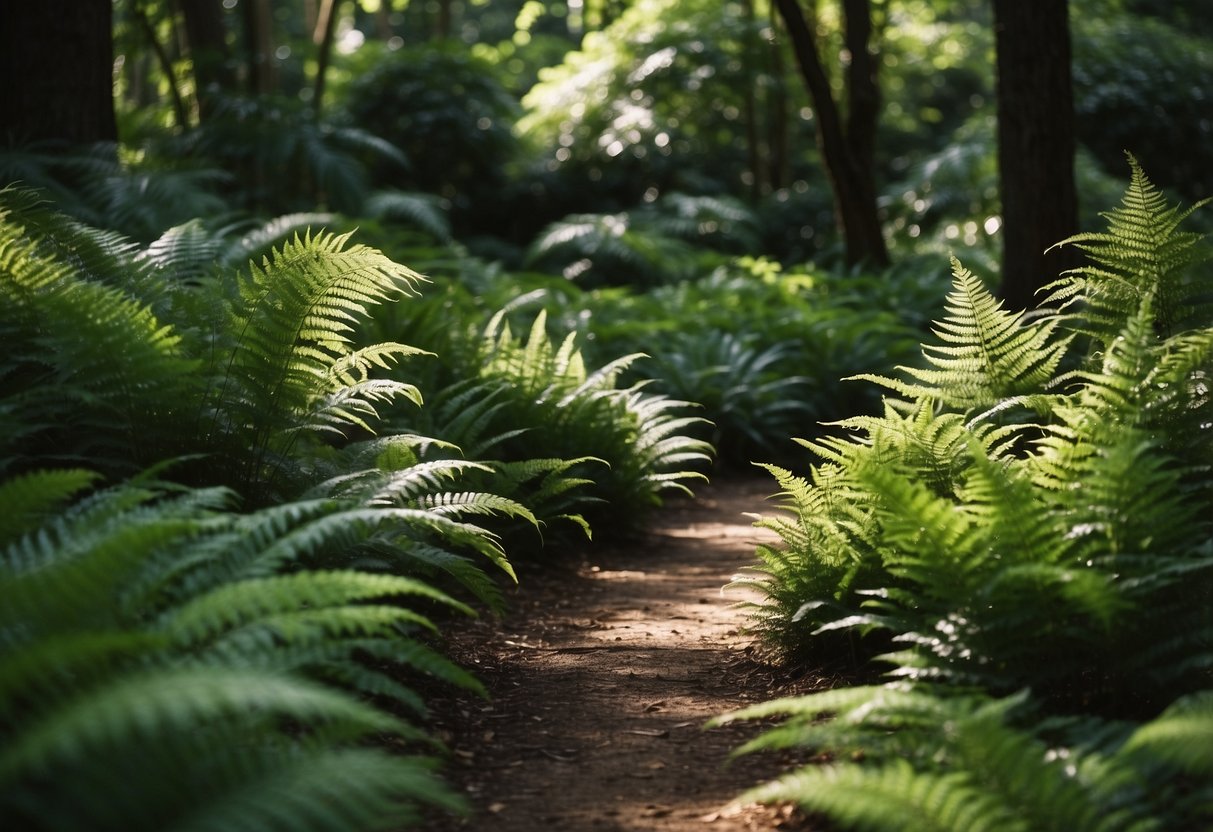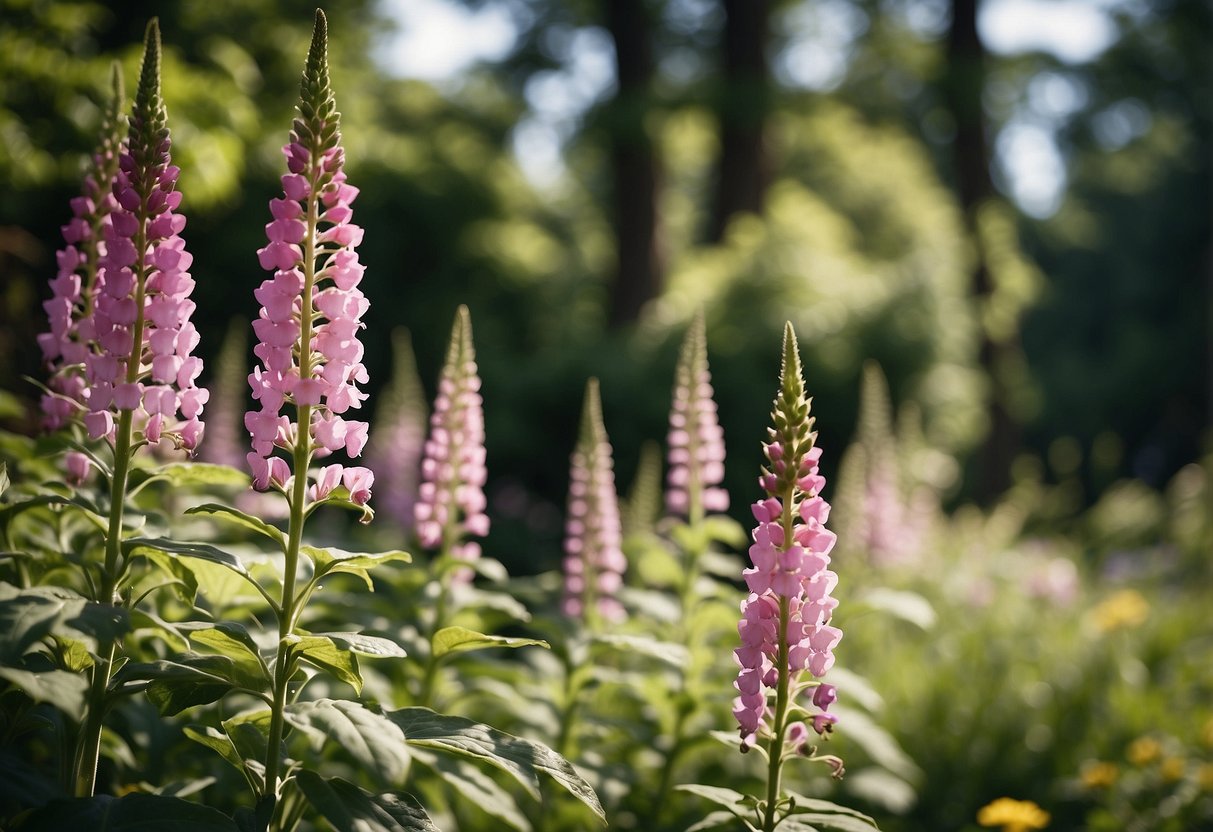Front Shade Garden Ideas: Brighten Up Your Home’s Entrance
Creating a beautiful front shade garden can transform the look of your home. It’s a wonderful way to make a welcoming entrance without needing a lot of sunlight. Whether you have large trees or a shaded porch, you can still grow a lush, vibrant garden that impresses all who visit.

Why struggle with plants that won’t thrive in the shade when there are so many options that love low-light conditions? By choosing the right plants and arranging them thoughtfully, you can enjoy a colorful, textured landscape right in front of your house. Dive in and explore various ideas that will help your front shade garden flourish.
1) Hostas

Hostas are a great choice for a front shade garden. They come in different colors like green, blue, and gold, making them a versatile option for adding greenery to shaded areas.
These plants are very easy to grow and maintain. They thrive in shady spots and require minimal care, making them perfect for beginners.
You can pair hostas with other shade-loving plants like ferns and hydrangeas to create a beautiful, textured garden. Try using taller varieties at the back and smaller ones at the front for a layered effect. To get more ideas on designing with hostas, check out these Hosta Garden Design Ideas.
2) Ferns

Ferns are perfect for shade gardens and come in many varieties. The Cinnamon Fern is known for its reddish-brown fronds and can grow up to 5 feet tall.
The Soft Shield Fern is evergreen and native to Britain. It prefers damp spots and unfurls gracefully in spring.
Another beautiful option is the Lady Fern, which has delicate, lacy foliage and thrives in moist shade gardens.
3) Heucheras

Heucheras, also known as coral bells, are perennial plants that brighten up shady parts of your garden.
Their foliage comes in various colors, from deep purple to bright green.
They thrive in partial shade and do well in USDA zones 4-9.
Heucheras prefer well-draining, humus-rich soil, which helps them grow strong and vibrant.
Darker-leaved varieties can tolerate more sun, making them versatile for different garden spots.
Plant Heucheras 1-2 feet apart to give them room to spread and show off their stunning leaves.
4) Astilbes

Astilbes are perfect for your front shade garden. These plants have beautiful flower plumes in colors like pink, purple, and white. They thrive in shady spots, adding a splash of color where it’s needed most.
They grow well in USDA zones 3 to 9. The best time to plant astilbes is in spring or fall. You will love their feathery green foliage.
For more details on specific types, check out Astilbe ‘Bridal Veil’ which has lovely ivory-white flowers.
Another stunning variety is Dark Side of the Moon with its chocolate brown leaves and rosy purple flowers.
5) Foxgloves

Foxgloves are wonderful for shady front gardens. They thrive in partial shade to full sun and add bright colors with their tall flower spikes.
When planting, space them 12-18 inches apart to allow for growth. Choose a spot in your garden with well-draining soil and dig a hole twice as wide as the plant’s container.
Gently loosen the roots before placing the plant in the hole. Backfill with soil, press gently, and water well. For best results, avoid areas with heavy, wet soil to prevent root rot.
6) Bleeding Hearts

Bleeding hearts are perfect for your shade garden. They have unique heart-shaped flowers that dangle from arching stems. These plants thrive in the shade and can grow from 12 to 36 inches tall, depending on the variety.
Plant them in uneven drifts and clumps with hostas for a cohesive look. They bloom from late spring to early summer, adding color to your garden. Learn more about how to grow bleeding hearts here.
7) Lungworts

Lungworts, also known as Pulmonaria, are perfect for a front shade garden. Their unique spotted or variegated leaves add a charming touch.
These perennials bloom early in the spring with pink and blue flowers, adding vibrant color. Lungworts do well in part shade or full shade, making them versatile for various garden spots.
Their foliage remains attractive throughout the season, providing prolonged visual interest even after the flowers fade. Consider adding lungworts for a whimsical and lush look in your shady front garden. For more details, check out tips on planting lungwort.
8) Coral Bells

Coral Bells are a fantastic choice for a front shade garden. These plants have stunning foliage in a range of colors like red, green, and even purple. They’re perfect for adding a pop of color to shady areas.
You can grow Coral Bells in partial to full shade. They also attract butterflies and hummingbirds. For the best results, space them 1-2 feet apart.
Try pairing them with green hostas or ferns for a striking contrast. Their compact form makes them great for small gardens or pots.
9) Toad Lilies

Toad lilies are perfect for your front shade garden. They offer a splash of color with their unique, spotted flowers.
These plants thrive in partial to full shade, making them ideal for areas with limited sunlight. They grow best in moist, well-drained soil.
Toad lilies attract bees, butterflies, and hummingbirds, bringing life and movement to your garden. Learn more about these wonderful plants here.
10) Jacob’s Ladder

Jacob’s Ladder is a wonderful plant for your front shade garden. It thrives in partial shade, so it’s perfect for woodland areas or places with dappled sunlight.
This plant has lovely fern-like leaves and delicate flowers that add a splash of color. Jacob’s Ladder prefers well-drained, fertile soil that’s enriched with organic matter.
Keep the soil moist to help it establish. You’ll love how it brightens up those shady spots and brings a touch of elegance to your garden design. Learn more about growing Jacob’s Ladder.
Benefits of a Front Shade Garden

A front shade garden can help you save on energy costs and improve curb appeal, making your home both more efficient and attractive.
Energy Efficiency
A front shade garden can lower the temperature around your home. Plants in a shade garden reduce the amount of direct sunlight hitting your house. This keeps your home cooler in the summer. For example, large leaves from ferns and hostas can provide ample shade.
By lowering the ambient temperature, your air conditioning will not have to work as hard. This can lead to noticeable savings on your energy bill. Trees and tall shrubs can offer even more insulation, blocking the sun’s rays before they reach your windows and walls.
In the winter, deciduous plants will lose their leaves and allow sunlight to warm your home. That means you get the best of both worlds: cooling in summer and warming in winter.
Curb Appeal
A well-designed front shade garden can boost your home’s curb appeal significantly. Using plants that thrive in low light, like vinca and hostas, you can create a lush, inviting entrance.
Choose plants with varying textures and colors to make your garden stand out. For instance, mix heart of the jungle elephant ears with Persian shield plant and sweet potato midnight lace for a stunning visual effect. Include elements like a small fountain or decorative stones to add character.
Having a beautiful garden can leave a lasting impression on guests and potential buyers if you plan to sell your home. It shows that you care for your property and adds an element of charm.
Designing Your Front Shade Garden

Creating a shade garden in the front yard can be a relaxing and beautiful way to use space that gets little sunlight. Focus on selecting shade-loving plants and arranging elements that draw the eye.
Choosing the Right Plants
For a vibrant front shade garden, select plants that thrive in low light. Hostas are a popular choice due to their variety of sizes and colors, making them adaptable to many designs. Ferns also bring lush greenery and texture.
Consider flowering plants like foxglove and columbine for spots of color. These plants can brighten up shady areas with their blossoms.
Another option is vinca, a ground cover that spreads easily and remains green throughout the year. Lily of the valley offers fragrant blooms and does well in the shade.
Be sure to group plants with similar water and soil needs. This makes caring for your garden simpler and ensures that all your plants flourish.
Arranging Focal Points
Focal points help to create interest and highlight specific areas. A fountain can provide a relaxing water feature and serve as a centerpiece.
Consider placing decorative statues or garden gnomes amidst the greenery. These elements add charm and personality.
For seating, a small bench or stone stool invites relaxation. Position it where you can enjoy the view of your garden.
Pathways made of natural materials like stones or wood chips guide visitors through the space and prevent plants from being trampled. Containers with shade plants can also define areas and add height and variety.
These focal points not only enhance the beauty of your front shade garden but also create an inviting atmosphere.







